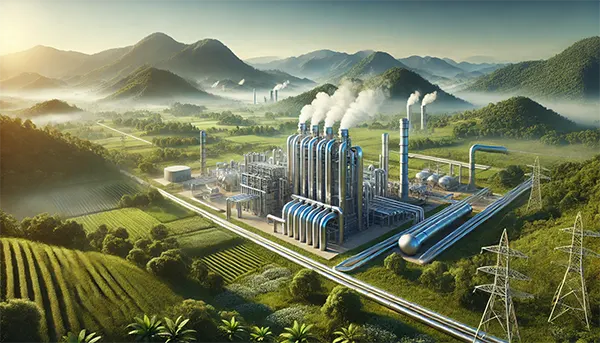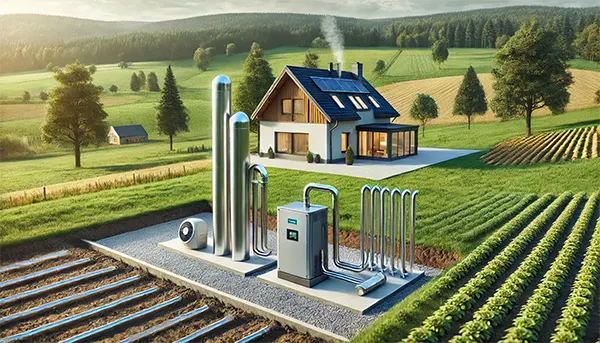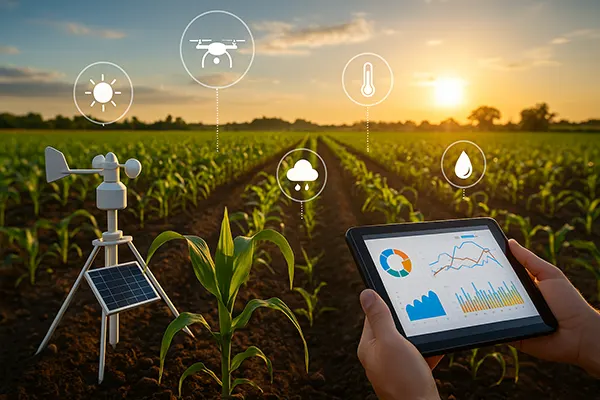Geothermal Energy: Harnessing the Power of the Earth’s Heat

Geothermal energy is an exciting and sustainable source of power that comes directly from the Earth’s core. This renewable energy option taps into the heat stored beneath the Earth’s surface to generate electricity and provide heating. With the growing concerns about climate change and the need for cleaner energy sources, geothermal energy has emerged as a key player in the global push for more sustainable energy solutions. In this article, we will dive deeper into what geothermal energy is, its benefits, challenges, and the future prospects of this renewable energy source.
What is Geothermal Energy?
Geothermal energy is the heat that is stored beneath the Earth’s surface. This heat comes from two primary sources: the Earth’s internal heat from the decay of radioactive elements and the heat from the Earth’s molten core. The most common use of geothermal energy is for power generation, where it is harnessed through steam or hot water from underground reservoirs. These sources can be found in areas with significant volcanic activity, such as Iceland, New Zealand, and parts of the United States. Geothermal plants harness this heat and convert it into usable energy for both industrial and residential use.
There are three main types of geothermal energy systems: dry steam plants, flash steam plants, and binary cycle plants. Dry steam plants take steam directly from underground reservoirs and use it to drive turbines. Flash steam plants take hot water from the ground and release pressure to create steam, which is then used to generate electricity. Binary cycle plants transfer heat from geothermal hot water to another liquid that boils at a lower temperature, which is then used to turn a turbine. All these methods help generate electricity and provide an alternative to traditional fossil fuel-based energy production.
Geothermal energy is not only used for electricity production but also for direct heating purposes. In many regions, geothermal energy is used to heat homes, greenhouses, and even entire districts. Geothermal heat pumps are commonly used for residential heating, where a heat exchanger system is buried underground to tap into the consistent temperatures of the earth. This type of system is highly efficient and environmentally friendly, making it an attractive option for homeowners looking to reduce their carbon footprint.
Understanding the Geothermal Energy Systems
Geothermal systems can be broken down into two primary categories: low-temperature and high-temperature geothermal resources. Low-temperature systems, typically used for heating, involve the use of groundwater that is not extremely hot, but still sufficient to transfer heat for residential or commercial purposes. High-temperature systems are typically used for electricity production and involve steam or superheated water from deep underground reservoirs. These systems require advanced drilling techniques and high-capacity equipment, making them more expensive to install compared to low-temperature systems.
Geothermal plants work by using underground reservoirs that have stored heat for thousands of years. To extract the heat, wells are drilled into the Earth to reach these geothermal reservoirs. Once accessed, the hot water or steam is brought to the surface and used to power turbines, which in turn generate electricity. The water or steam is then re-injected into the Earth to maintain the pressure and sustainability of the geothermal reservoir. This method is highly sustainable, as the heat from the Earth is essentially inexhaustible over human timescales.
There is also a growing trend of using geothermal energy for district heating systems, which are widely implemented in countries like Iceland and Sweden. These systems are designed to provide a reliable source of heat to entire communities, reducing the reliance on fossil fuels for heating purposes. By using geothermal energy for district heating, the carbon footprint of heating homes and businesses can be significantly reduced, contributing to a cleaner environment and more sustainable urban development.
Benefits of Geothermal Energy
Geothermal energy offers a wide range of benefits, both environmental and economic. One of the primary advantages of geothermal energy is that it is renewable and sustainable. Unlike fossil fuels, which are finite and release harmful pollutants into the atmosphere, geothermal energy is constantly replenished by the Earth’s internal heat. This makes it an excellent alternative to traditional energy sources, helping to mitigate the effects of climate change and reduce the dependence on non-renewable resources.
Geothermal power plants also have a minimal environmental impact. While other forms of energy production, such as coal and natural gas, release harmful greenhouse gases into the atmosphere, geothermal plants produce little to no emissions. This makes geothermal energy a clean source of power that can help reduce global carbon emissions. Furthermore, geothermal plants use significantly less water than traditional power plants, making them an environmentally friendly option in regions where water conservation is a concern.
Another major benefit of geothermal energy is that it provides a stable and reliable energy source. Unlike solar and wind power, which are dependent on weather conditions, geothermal energy can provide continuous, baseload power. This means that geothermal plants can operate 24/7, regardless of external conditions. This reliability makes geothermal energy a valuable resource for ensuring a consistent and dependable supply of electricity to the grid, especially in regions with limited access to other renewable energy sources.
The Role of Geothermal Energy in Sustainability
Geothermal energy plays a crucial role in the pursuit of global sustainability goals. With the ongoing concerns about climate change and the growing demand for clean energy solutions, geothermal energy provides a viable alternative to traditional fossil fuel-based power generation. By reducing our reliance on coal, oil, and gas, geothermal energy helps lower greenhouse gas emissions and supports efforts to achieve a low-carbon future.
In addition to its environmental benefits, geothermal energy also offers significant economic advantages. Geothermal power plants can be built in many parts of the world, creating jobs and stimulating local economies. These plants also provide long-term, low-cost electricity, which can help reduce energy bills for consumers. As the technology advances and costs continue to decrease, geothermal energy is expected to become more affordable and accessible, further promoting its widespread adoption as a reliable, sustainable energy source.
Geothermal energy has also proven to be a key player in energy independence. Countries with abundant geothermal resources can use this energy to reduce their dependence on imported fossil fuels. By harnessing the Earth’s natural heat, nations can enhance their energy security, reduce energy costs, and move toward greater self-sufficiency in energy production.

Challenges and Limitations of Geothermal Energy
Despite the many benefits of geothermal energy, there are still several challenges and limitations to its widespread adoption. One of the primary challenges is the high initial cost of building geothermal power plants. The drilling process required to access geothermal reservoirs is expensive and requires specialized equipment. Additionally, geothermal power plants are capital-intensive projects that require significant upfront investment before they begin to generate electricity. This can be a barrier to entry for many countries or regions looking to adopt geothermal energy on a large scale.
Another challenge is that geothermal energy is location-specific. Geothermal power plants can only be built in regions that have access to geothermal resources, such as areas with volcanic activity or tectonic plate boundaries. This means that geothermal energy is not available everywhere, limiting its potential as a universal energy solution. While geothermal heat pumps can be used for heating in residential areas, large-scale geothermal power plants are restricted to certain geographic locations.
Geothermal energy production can also face issues related to the depletion of resources. In some cases, geothermal reservoirs can become over-exploited if not managed properly. This can lead to a decrease in the availability of steam or hot water, resulting in reduced power generation capacity. To prevent this, geothermal plants must carefully manage the re-injection of fluids back into the Earth to ensure the sustainability of the geothermal resource. Proper reservoir management and long-term planning are essential for maintaining the reliability and efficiency of geothermal power generation.
Geothermal Energy’s Role in the Future
Looking ahead, geothermal energy has the potential to play an even larger role in the global energy mix. Technological advancements, such as enhanced geothermal systems (EGS), are helping to make geothermal energy more accessible in regions that do not have naturally occurring geothermal reservoirs. EGS technology involves creating artificial reservoirs by injecting water into hot rock formations, which then allows for the extraction of geothermal energy. This breakthrough has the potential to unlock geothermal resources in a much wider range of areas, making geothermal energy available to more countries around the world.
Furthermore, the integration of geothermal energy with other renewable energy sources, such as solar and wind, can help create a more stable and reliable energy grid. While solar and wind power are intermittent, geothermal energy provides a constant, baseload supply of electricity that can help balance out the fluctuations in supply from other renewable sources. This combination of renewable energy sources can help ensure a clean, sustainable, and reliable energy future.
As the world continues to prioritize sustainability and clean energy solutions, geothermal energy will remain a vital part of the global energy landscape. Through continued research, investment, and technological innovation, geothermal energy has the potential to help meet the growing energy demands of the future while reducing environmental impacts and contributing to a low-carbon world.
Conclusion
Geothermal energy is a powerful, sustainable, and reliable energy source that has a significant role to play in addressing the global energy crisis. While there are challenges to overcome, such as the high initial costs and location limitations, the benefits far outweigh the drawbacks. With advancements in technology and increasing investment, geothermal energy has the potential to become a key player in the transition to a clean and sustainable energy future. By harnessing the heat beneath the Earth’s surface, we can create a more secure, environmentally friendly, and economically viable energy system for generations to come.


